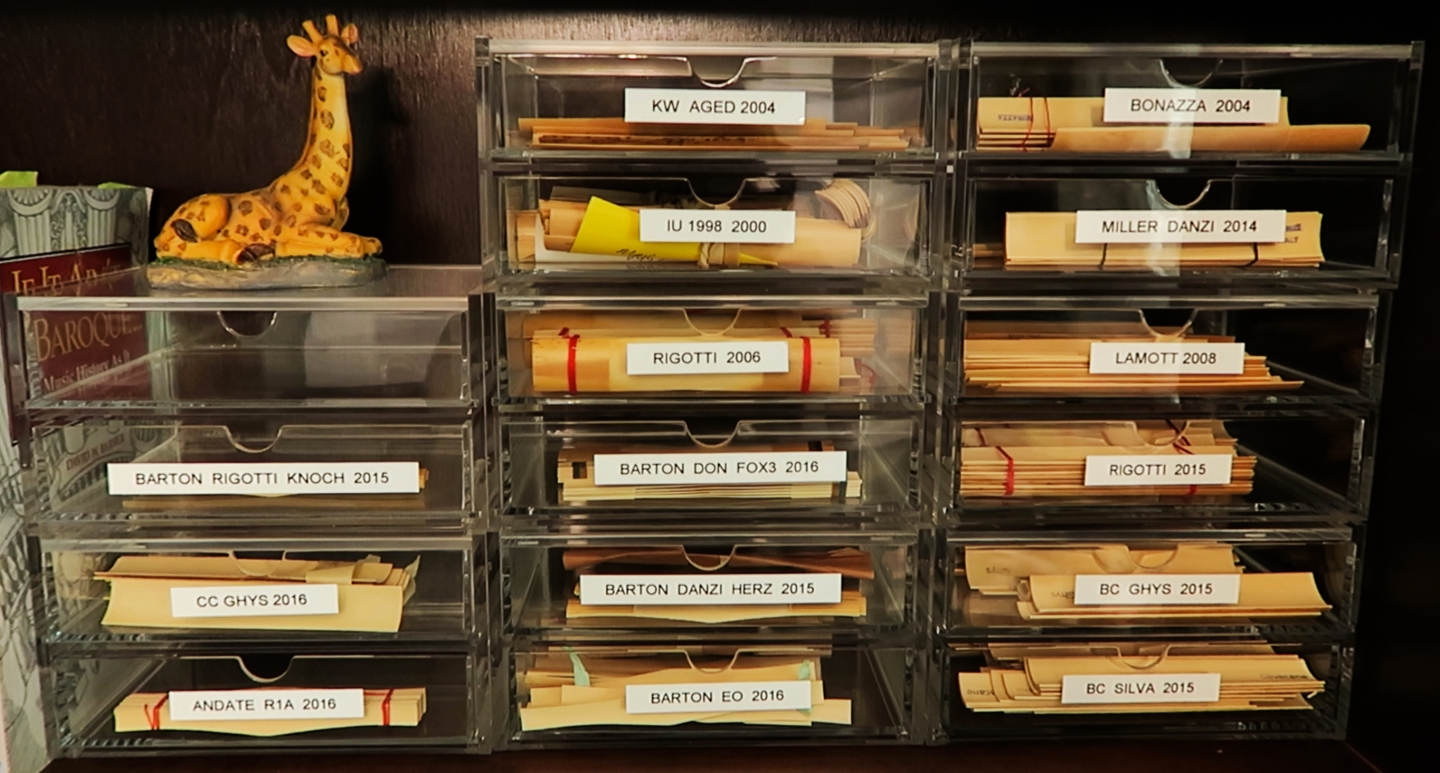My Cane Collection has been built over the past 20+ years of Reed Making.
In my collection I have Variations of Cane from Different Vendors and Various Styles (Gouged, Gouged and Profiled, and Gouged Shaped and Profiled).

Most of the cane in my collection I haven’t talked about on My Blog or YouTube Channel because most viewers do not have access to Vintage Cane.
As an avid viewer/reader of Blogs and YouTube videos- There’s nothing worse than seeing a cool product and realizing that it is Vintage or Limited Edition and is No Longer Available.
But if given the option to Snoop through another Bassoonist’s Cane Stash and hear their experiences- I would be first in line.
The double reed community is full of Tips and Tricks that sneak into Cane Discussions. The natural Botany of Cane inevitably creates variables. A discussion of cane always creates a dialogue about overcoming mother nature’s inconsistencies.
I collect cane for several reasons. The most important reason, The Cane Aging Process. Cane in my collection that is too soft at time of purchase is allowed time to rest and harden.
Rather than throw out (wasting time and money) soft spongy cane, I prefer to let the cane rest until it hits the desired hardness level. In this case, a little patience goes a long way.
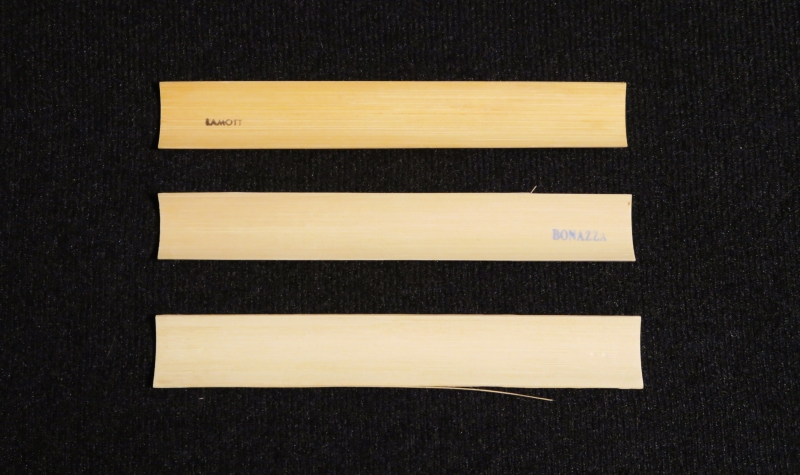
Aging Cane can also be a bit of a Balancing Act.
If Cane is Left Too Long it may become Overly Resistant and Less Vibrant.
When aging cane, the color will go from a White (soft) to Golden (time to make reeds) and finally Dark Ruddy Yellow (cane left too long).
Although much can be gained simply by looking at cane colors as an indication of Cane Hardness and Aging, The Bassoon by Kopp suggest addition methods.
Kopp suggests methods such as the Finger Nail Test, applying pressure to the bark and looking for indentations or Twisting the Cane to gauge Cane Flexibility and Hardness.
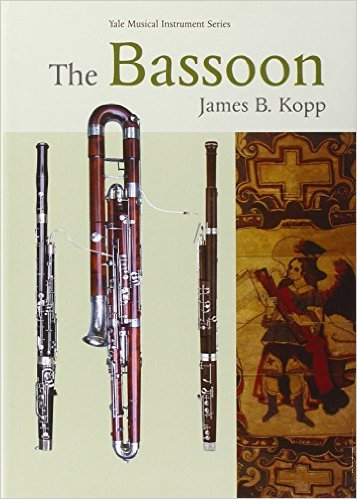
These are methods I learned early in my Bassoon Reed Making Adventures working with Mark Eubanks.
Although these tips and tricks may be helpful to many bassoonists, I found them challenging due to my own inconsistencies as a human.
This may be due to my own personal challenges with anemia from my food allergies.
On days when I was healthy and felt boundless energy I was able to twist all cane with little effort, like I was Wonder Woman.
But the opposite was true on days when I was more demure and introverted after suffering from an allergic reaction. On these days, I could not twist any cane easily.
I must admit that rarely has the fingernail test worked as a consistent indicator for my reed making. If I am not careful my food allergies can create inconsistent nail strength. My health proved too great a variable for the tests by Kopp to prove accurate for my reed making.
These added tests do come in handy for my students!
In my own reed making I prefer to use Cane Color and/or a Cane Hardness Tester to avoid my own personal inaccuracies.
But the Ultimate Test to Gauge Cane Age and Hardness, for me, is to Make 3 Reeds. How the cane processes, forms and scrapes is a sure fire “proof is in the pudding” way to know the cane is hitting its prime.
I find this extra helpful because all brands of cane will age at different speeds.
Recently I have gathered all of My Cane Collection into a Cane Library.
For double reed performers looking to build a Cane Collection I highly suggest creating a Uniform Method of Storage and Organization.
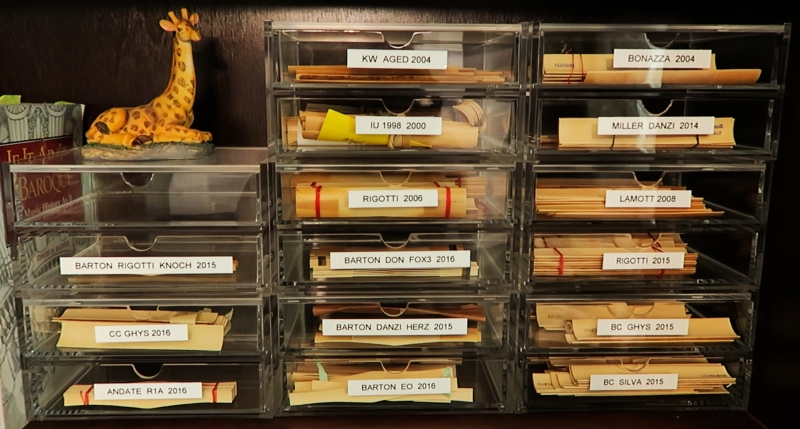
Before I built my Cane Library I had cane stuffed in the back of dresser drawers, in Chinese food containers, and lying in mounds on my reed desk. It was a challenge to always remember the cane type, purchase date and vendor in My Cane Collection.
My Cane Collection required too much responsibility. It was a challenge to constantly remember what I had and the date of purchase. I needed a system of organization that required minimal effort on my part.
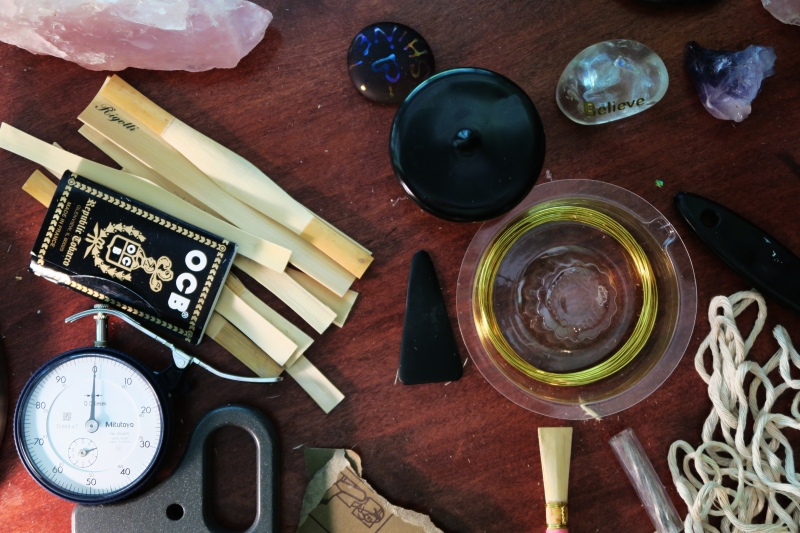
By moving My Cane Collection to a centralized location I can now quickly Take Inventory, check in on the Aging Process before the cane becomes Too Hard, and it is Easily Accessible. I no longer am challenged by Out of Sight Out of Mind.
Here are details about how I built My Cane Library over the Years with little Tips and Tricks for the Each of the Styles of Cane.
As you begin building your Cane Collection it is important to remember that before the cane is stored it should be Dry from Processing (Gouging, Shaping and/or Profiling).
I learned this lesson the hard way. Once in college I put a few slightly damp pieces of cane in a plastic case. Punched in the side of the plastic case were air holes. I thought the air holes would allow the cane to continue to dry out, but sadly I was wrong.
The cane had retained enough water in the fibers to create Mold and Mildew. I had to throw it away. This was a Lesson Learned the Hard Way.
Moldy Cane Makes Poor Reeds AND Can Make You Sick!
For my more advanced readers, I do have a Suggestion for establishing a Cane Collection. Specifically for Higher Education Bassoonists: Buy Variations of BOTH Your Favorite and Least Favorite Brands.
In My Cane Collection I make it a point to have multiple variations of My Favorite Brands from different Vendors.
Vendor? Why is the vendor important?!?
One of the great lessons I learned from My Cane Review YouTube Series was the important role vendors play in Quality Control.
Some vendors will only sell cane that they feel will make good reeds, discarding poor quality (warped, excessive missing bark, etc) to keep their reputation strong.
Others companies will sell everything and anything that grew, regardless of reed making potential. Even poor cane can come in handy for educational purposes. That is why…
I Keep All The Cane – Even Cane I Dislike!
If I dislike a cane style, it is usually due to Cane Inconsistencies or Poor Quality. Poor Quality Cane is great for Teaching Demonstrations. By working with Poor Quality Cane, I am able to showcase how inconsistent variables will react when formed into a reed.
Before I begin the demonstration, I know how the cane will most likely react. Then I am able to share this knowledge and experience with the students.
During the demonstrations students usually have the “Aha!” Moment.
The moment when they recognize me demonstrating a specific challenge they have experienced in their own reed making adventures. The “That’s why my reed didn’t react as I had intended” Moment.
A collection of a variety of styles of cane allows flexibility in my reed making, teaching and performing endeavors. I hope you’ve enjoyed Snooping though My Collection.
Let me know if you have any cane suggestions for me to try! I love hearing what everyone is using around the world. There are so many styles and colors each location and dialect is searching for- it’s exciting to be part of the world bassoon dialogue.
HAPPY BASSOON-ING, Everybody!

